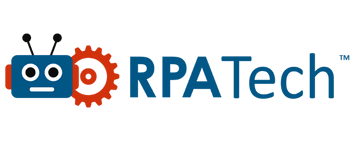In the ever-evolving landscape of modern business, optimizing processes is the key to staying competitive. But how can organizations identify inefficiencies, bottlenecks, and hidden opportunities for improvement within their operations? Enter Process Mining – a powerful analytical technique that is revolutionizing the way businesses understand and optimize their processes. In this comprehensive guide, we will delve deep into the world of Process Mining, exploring what it is, how it works, and its potential benefits for your organization.
What is Process Mining?
Process Mining is a data-driven discipline that enables organizations to discover, analyze, and improve their business processes. It offers a real-time and holistic view of how processes unfold within an organization by extracting valuable insights from event logs and transactional data. This technique provides a crystal-clear window into the complex web of activities that occur across various departments and systems, shedding light on what actually happens, as opposed to what should happen.
The Three Pillars of Process Mining
Process Mining rests on three foundational pillars:
Discovery
The first step in Process Mining involves collecting event data, often referred to as “event logs.” These logs contain information about all the activities, transactions, and interactions that occur within an organization’s processes. Process Mining software then analyzes this data to construct process models, revealing how work flows through the organization.
Conformance
Conformance analysis compares the actual process execution to predefined models or benchmarks. It helps identify deviations, bottlenecks, and areas where processes do not align with the intended design. This phase is crucial for highlighting compliance issues and inefficiencies.
Enhancement
Once inefficiencies and deviations are identified, Process Mining offers recommendations for process improvements. These insights can lead to enhanced productivity, cost savings, and better customer satisfaction.
How Does Process Mining Work?
Data Collection
The core of Process Mining is the event data collected from various sources, such as enterprise resource planning (ERP) systems, customer relationship management (CRM) software, and more. These logs contain valuable information on process timestamps, activities, user interactions, and outcomes.
Event Log Preprocessing
Before analysis, event logs need to be preprocessed to remove noise, handle missing data, and align timestamps. This step ensures the data is clean and reliable, making it suitable for further analysis.
Process Discovery
The Process Discovery phase involves transforming event data into visual process models. Process Mining tools use various algorithms to construct these models, such as:
– Frequent Pattern Mining: Identifying common sequences of activities.
– Heuristic Approaches: Constructing models based on predefined rules.
– Petri Nets: Representing processes using mathematical modeling techniques.
Conformance Checking
In this stage, Process Mining compares the discovered process model with the ideal or expected process, highlighting discrepancies. Any deviations, bottlenecks, or inefficiencies are brought to the forefront, enabling organizations to take corrective actions.
Process Enhancement
Based on the insights gained from Conformance Checking, organizations can make data-driven decisions to optimize their processes. This may involve redefining workflows, reallocating resources, or automating tasks to enhance efficiency and compliance.
Benefits of Process Mining
Process Mining offers a plethora of advantages for organizations striving to streamline their operations and achieve better outcomes. Here are some key benefits:
Improved Efficiency
By visualizing the entire process and identifying bottlenecks, inefficiencies, and deviations, Process Mining enables organizations to make targeted improvements. This can result in faster processes, reduced costs, and enhanced resource allocation.
Enhanced Compliance
Compliance with regulations and internal policies is a top priority for many organizations. Process Mining ensures that processes are aligned with these standards, reducing the risk of non-compliance and associated penalties.
Data-Driven Decision Making
Process Mining is all about data, and data is the cornerstone of informed decision-making. It allows organizations to base their decisions on real process performance, rather than assumptions or anecdotes.
Better Customer Experience
Optimized processes often lead to better customer experiences. By identifying and addressing issues in the workflow, organizations can ensure that customer interactions are smoother, more efficient, and ultimately more satisfying.
Cost Savings
Efficient processes often translate to reduced costs. By eliminating redundant steps and reallocating resources, organizations can operate more cost-effectively.
Use Cases for Process Mining
Process Mining is a versatile technique with applications across various industries:
Healthcare
In the healthcare sector, Process Mining can help improve patient care by streamlining administrative processes, reducing waiting times, and enhancing the efficiency of clinical pathways.
Finance
Financial institutions use Process Mining to optimize loan processing, claims management, and risk assessment. It helps reduce operational costs and improve compliance.
Manufacturing
Manufacturers can benefit from Process Mining by optimizing production lines, inventory management, and supply chain operations. This leads to increased efficiency and lower production costs.
Retail
Retailers leverage Process Mining to enhance the customer experience by optimizing supply chain logistics, inventory management, and checkout processes.
Service Industry
Service-based organizations can improve service delivery and customer satisfaction by optimizing service request management, scheduling, and resource allocation.
Challenges and Considerations
While Process Mining offers substantial benefits, it’s important to consider some challenges:
Data Quality
The quality of event data is paramount. Inaccurate or incomplete data can lead to flawed insights and incorrect process models.
Data Private and Security
Handling sensitive data is a concern, and organizations must ensure that they comply with data protection regulations and safeguard the privacy of individuals.
Change Management
Implementing process improvements based on Process Mining insights may require changes in workflows and job roles, which can be met with resistance and challenges in employee adaptation.
Getting Started with Process Mining
Implementing Process Mining in your organization involves several steps:
- Data Collection: Identify the sources of event data and collect the necessary logs.
- Select a Process Mining Tool: Choose a Process Mining software or platform that suits your organization’s needs.
- Preprocess Data: Clean and prepare the data for analysis, addressing any data quality issues.
- Process Discovery: Use the selected Process Mining tool to discover and visualize your processes.
- Conformance Analysis: Compare the discovered processes with ideal models to identify discrepancies.
- Process Enhancement: Make data-driven decisions to optimize processes and implement changes.
- Continuous Monitoring: Process Mining is an ongoing endeavor. Continuously monitor and refine your processes for long-term benefits.
Conclusion
Process Mining is a game-changer for organizations looking to understand, optimize, and transform their operations. By providing a data-driven perspective of processes, it offers a competitive edge, improved efficiency, and the ability to make informed decisions. As businesses continue to evolve, Process Mining is an indispensable tool in the quest for operational excellence. Whether you are in healthcare, finance, manufacturing, or retail, Process Mining can help you unearth the hidden insights that will drive your organization’s success. Embrace the power of Process Mining, and watch your processes transform before your eyes.




